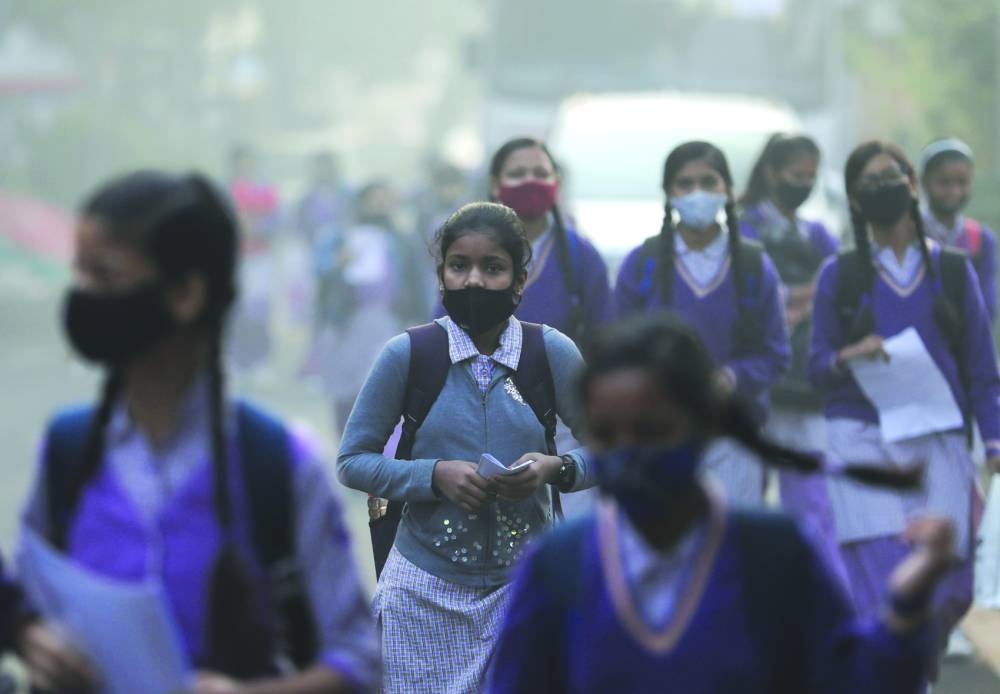But there is no authoritative, up-to-date global accounting of air pollution, a health risk that takes a larger toll than malaria and HIV/Aids combined. Particulate matter, a form of air pollution often associated with dust and smoke, was the leading contributor to the world’s disease burden in 2021, and has been found to cut 1.9 years from average life expectancy. Air pollution was also linked to more than 700,000 deaths in children under five years old in 2021, making it the second-highest risk factor for death in this age group.
The world’s main authority on air quality is arguably the WHO, which produces globally influential standards for pollution levels. Its most recent guidelines, published in 2021, aimed to improve air-quality standards by lowering the recommended level of fine particulate matter (PM2.5) from ten micrograms per cubic meter to five.
The WHO also compiles data on annual particulate matter in cities worldwide through its ambient air quality database, which is primarily sourced from government measurements and updated every two to three years. But in the most recent edition (updated in January 2024), only 0.4% of cities reported data from 2022, and more than half of the data are at least seven years old. Many countries in Africa, Latin America, and Asia – which bear a disproportionate share of the health burden from air pollution – are missing measurements, with four of the most polluted countries reporting none at all. This lack of data makes it impossible to gauge global progress or to ensure strategic resource allocation.
Satellite-derived data could fill in the gaps. But while several groups generate and compile such information, there is no definitive database. (Anecdotally, when we asked ten air-quality experts where they go for the most recent data, we received 14 different answers, none of which meet the criteria for an authoritative global source.) Moreover, annual data often have a lag of up to two years, and there is no established mechanism to assess their quality. Contrary to its name, calculating satellite-derived air-quality data requires ground monitoring data, which can make satellite data less reliable in countries with little monitoring capacity.
Addressing air pollution worldwide requires a clear view of the global picture. Fortunately, building a system that regularly tracks collective progress on reducing particulate matter, with built-in mechanisms to help improve data-gathering efforts in the most polluted places, is technologically, logistically, and politically feasible.
The first goal should be to create an annual, authoritative accounting of PM2.5 pollution in every country. This would require incentivising countries to contribute more recent ground-monitoring data, establishing a process to combine these data with available satellite information to determine their annual pollution levels, and identifying capacity and data gaps and directing resources accordingly.
Global development and philanthropic organisations will have to provide significant financial and human resources to launch such an effort, including support for countries that currently lack the capacity to monitor or measure air quality. It will also require public-health, environmental, and finance leaders to work together, much as they have done to tackle other serious issues such as malaria, HIV/Aids, Covid-19, and tuberculosis.
Several UN agencies, including the WHO, the World Meteorological Organisation, and the UN Environment Programme, could house or co-ordinate these data-gathering and capacity-building efforts. And institutions such as the World Bank, regional development banks (the African Development Bank, the Asian Development Bank, and the Inter-American Development Bank, among others), bilateral donors, and philanthropies must help finance them.
There is a dire need for international collective action to tackle this challenge, which is local, yet has global consequences. The latest report on reporting and tracking air quality, published by Our Common Air, addresses some of the key concerns in the commission’s recommendations. We have successfully confronted global health challenges in recent years and, in doing so, created a playbook that can be applied to others. The question now is whether the international community will use it to tackle the world’s single greatest external risk to human health. – Project Syndicate
- Soumya Swaminathan, a former chief scientist of the World Health Organisation, is Co-Chair of Our Common Air and Principal Adviser for the National Tuberculosis Elimination Program at India’s Ministry of Health and Family Welfare. Christa Hasenkopf is Director of the Clean Air Program at the Energy Policy Institute at the University of Chicago and a commissioner at Our Common Air.

